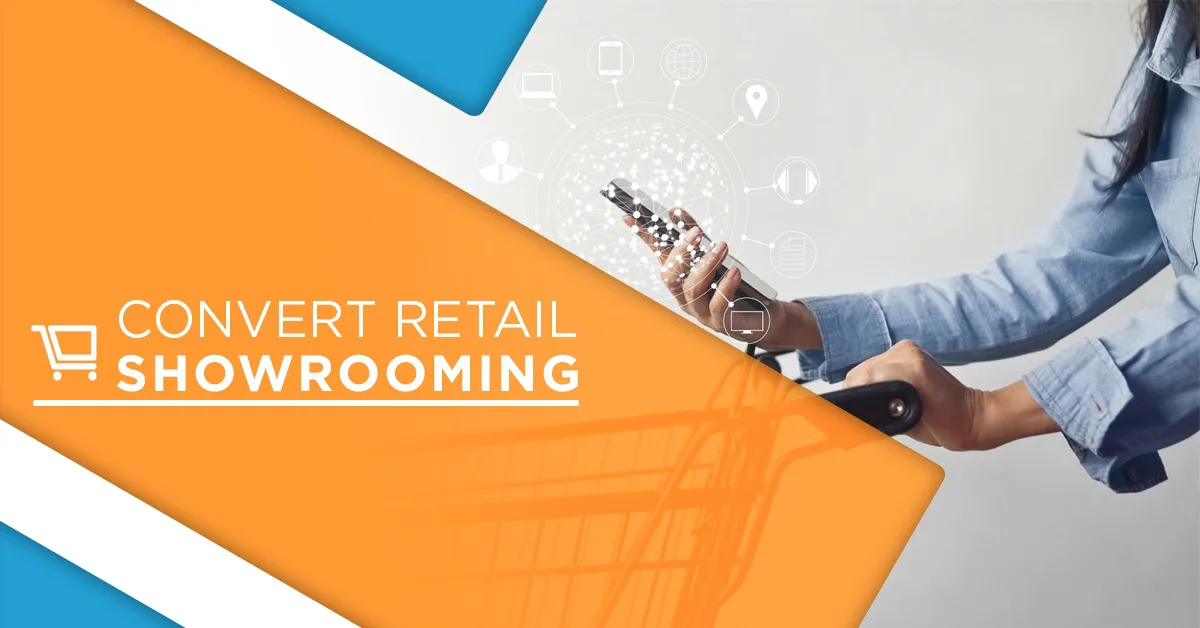

Over 60 percent of shoppers — roughly two out of every three — use their smartphones during their stop at the store. What began as an innocent multimedia experience has snowballed over the years into a transformed retail environment — one that’s turned shopping from retail therapy to e-therapy.
Sales staff to store owners alike wonder: What can we do to reclaim the in-store shopping experience and convert showroomers, and their mobile methods, into engaged customers? It turns out the same showrooming trend causing this quandary is also the solution.
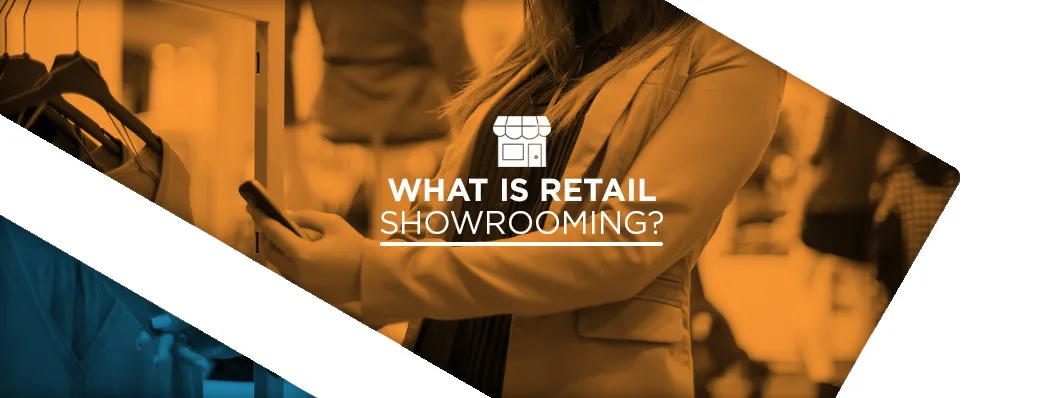
Showrooming refers to a common behavior today where a consumer will visit a retail store to compare the online price of a desired good with its in-store price. After making the retail environment comparison, the showroomer then proceeds to purchase the merchandise online, often from a competitor.
It is not difficult for sales staff to notice potential showrooming consumers. They’ll likely be evaluating a product or good for a significant length of time while reading their phone. When this happens, there’s a good chance the customer is using your physical inventory to sway their shopping purchase toward an e-tailer’s lower sticker price.
For this reason — and more — many retail managers and marketing personnel have come to see showrooming as a bane, not a boon, to their business. In the ever-evolving landscape of consumer tastes and preferences, is there a better way to reframe showrooming?
Over the past decade, reducing showrooming has been a challenge for many conventional stores, mainly because:
E-commerce sales reached $517 billion in 2018, up 15 percent from the previous year. These figures represent the overall momentum behind online shopping, which — in fewer than 10 years — has almost tripled its slice of total retail purchases, from 5.1 percent in 2007 to 14.3 percent in 2018.
Showrooming has affected some companies more than others. Consumer electronics store Best Buy revamped its brick-and-mortar stores when it saw significantly sliding sales lingering into the late 2000s. Best Buy now employs mini “stores-within-the-store,” with dedicated areas for specific electronic brands and experts stationed within, showcasing products and facilitating conversations with patrons.
Nearly 84 percent of customers admitted to showrooming, with over half reporting they wanted to see a product in person before buying. Many retail stores say this behavior reduces their role within the buying journey, relegating them to the margins of the consideration and decision phases.
Showrooming mitigates, if not eliminates, the impact and reputation of a store’s customer service. Interesting enough, many e-commerce brands — particularly in the apparel industry — have sought to built stronger brand loyalty and create more immersive customer experiences by deploying pop-up stores. Pop-ups by their nature mimic the personalized attention of retail customer service, proving human-to-human interaction still has a valuable role in today’s retail world.
Showrooming has traditionally been the nemesis of traditional, physical retailers. Those big, bad online retailers are huffing and puffing profits away, with undercut prices and the camouflage of convenience that comes with online shopping and delivery.
This attitude is not only cynical, it’s self-defeating. Retailers and their sales staff must leverage inevitable showrooming as a place to identify genuine sales opportunities, using best practices to increase retail conversion rates. Showrooming allows retailers to make foot traffic the foundation of performance analysis, answering once and for all how many opportunities you had to make a sale — then sharpening those opportunities tomorrow.
Continue reading for more in-depth explanations on these conversion strategies to reverse showrooming and reinvigorate the retail customer experience.
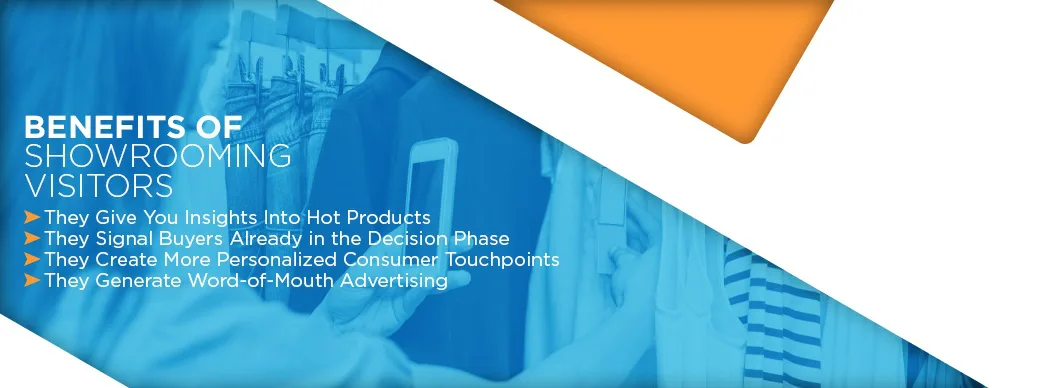
Rather than staying stubborn in their approach to showrooming, retailers can embrace the foot traffic-based engagement and conversion opportunities the trend affords.
What merchandise or sections of the store receive the most showroomers? If the aim is to increase retail conversion rates, sales staff and management must first understand where browsers are heading, then tailor in-store incentives accordingly. Think digital signage promoting user-generated content, advertising keen cross-sell recommendations or displaying product-specific QR codes showroomers can scan to see product information and ratings instantly.
While showrooming initially seems to lessen the impact of the store environment and sales staff on purchase conversions, it does indicate buyers who have moved beyond simple browsing and into actionable decision-making. When customers arrive already primed for a specific product or vendor you carry, you have the persuasive leg up. They’ve already indicated interest. All you need to do is seal the deal.
Personalizing your customer touchpoints reframes interactions to center real people. Just remember: More often than not, these touchpoints are marathons, not sprints. Showroomers want in-depth product expertise, trustworthy customer reviews, physical product interaction, omnichannel affordances and authentic customer service. Only in-store shopping delivers all that.
Showroomers converted into in-store customers are a vital word-of-mouth evangelist — notably when they experience a price-matching strategy or unexpected discount. It’s hard to tell what people like more: getting something on sale or telling people they got something on sale.
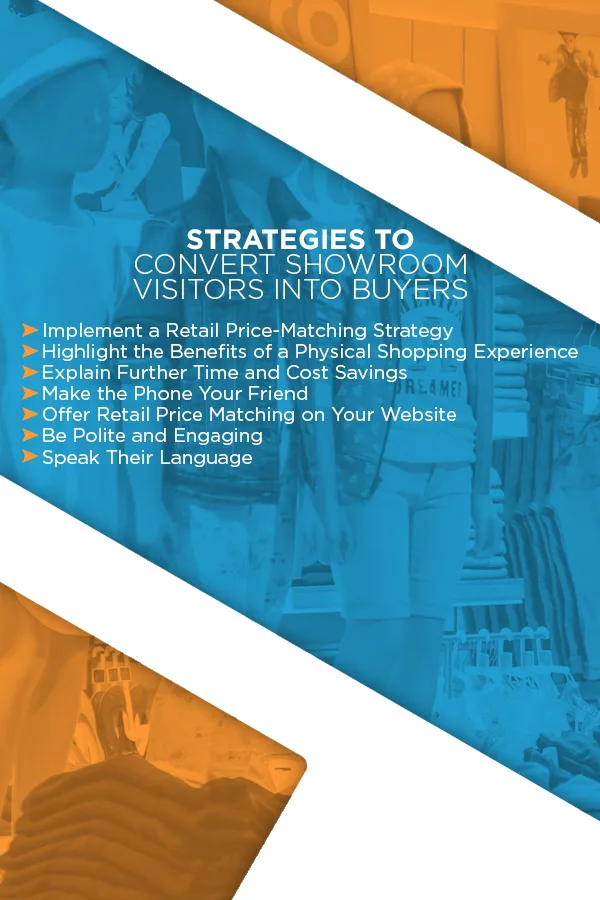
There are numerous retail conversion ideas stores can use to increase their in-store purchase rates, strategies revitalizing sales staff interactions, boosting in-store technology and matching contemporary consumer tastes.
1. Implement a Retail Price-Matching Strategy
If a customer shows a reputable online competitor selling an identical product at a lower price, offer to meet that price. Price matching isn’t bowing down to e-commerce. After all, 75 percent of revenue per sale is better than no sale at all, especially when a patron has taken up employees’ time. Plus, some of the largest and most successful retailers have spearheaded the price-matching strategies you can employ today alongside other price-based incentives.
The retail environment holds strengths and capabilities online shopping can’t match.
Use in-store signage to promote your price-matching policy and sales associates to further engage customers on the advantages of buying now.
Over 50 percent of consumers say they seek sales staff holding tablets or similar technology when shopping in a store. Why? In-store omnichannel technology gives both the employee and the consumer instant access to the very things showroomers are evaluating. Sales staff using devices can:
For example, beauty retailer Sephora harnesses smartphone technology by setting up QR and barcodes around in-store displays. Store patrons can scan those codes to read product reviews, earn loyalty points or receive store coupons.
Price-matching consistency is especially crucial for multi-location retailers who get sales and promotions from corporate headquarters, not from in-store managers or associates ideating them.
Train sales associates to identify engaged but on-the-fence customers. If a patron is hesitating based fundamentally on price, ensure your team launches into its price-matching guarantee available both online and in the store. Have the sales rep pull up customer reviews submitted on your website to seal the deal.
Warm, knowledgeable customer service is more valuable than ever to increase retail sales. As the saying goes, one pleasant visit may not turn a shopper into a lifelong customer — but one bad visit will create a lifelong critic.
Friendly sales associates can spur meaningful, authentic conversations with showroomers in many ways:
At their core, showroomers derive strong motivation from beating the system. They want to feel like experts who understand loopholes and cost savings. Their ultimate reward may not even be the product or products they just bought, but the satisfaction in how they bought it.
It’s a powerful emotion, one brick-and-mortar stores can harness to increase traffic, engagement and sales. Use showrooming opportunities as a chance to relay the “insider” perks of being your customer, from price matching to store loyalty rewards, store credits, exclusive sales and promotions, other vendor partnerships and more. One of the most valuable tips to increase retail sales is to speak the “hack the system” language of the showroomer, thereby increasing your conversion rate.
People-counting systems are pieces of hardware and software that sync up to count foot traffic in a particular area. They introduce one of today’s most powerful tools to strategize retail conversion ideas, reverse showrooming and see greater in-store sales.
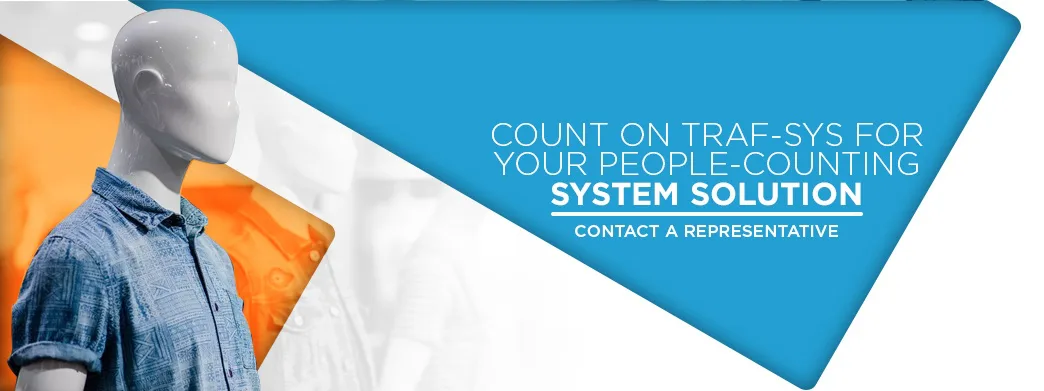
Interested in reversing showrooming to work in your store’s favor — and seeing retail conversion rates boost as a result? Traf-Sys can help.
Our state-of-the-art people-counting systems combine hard data with actionable ideas that make foot traffic the basis for your store’s business decisions.
Contact a representative to get started on a free, no-obligation counting system quote for your retail store.